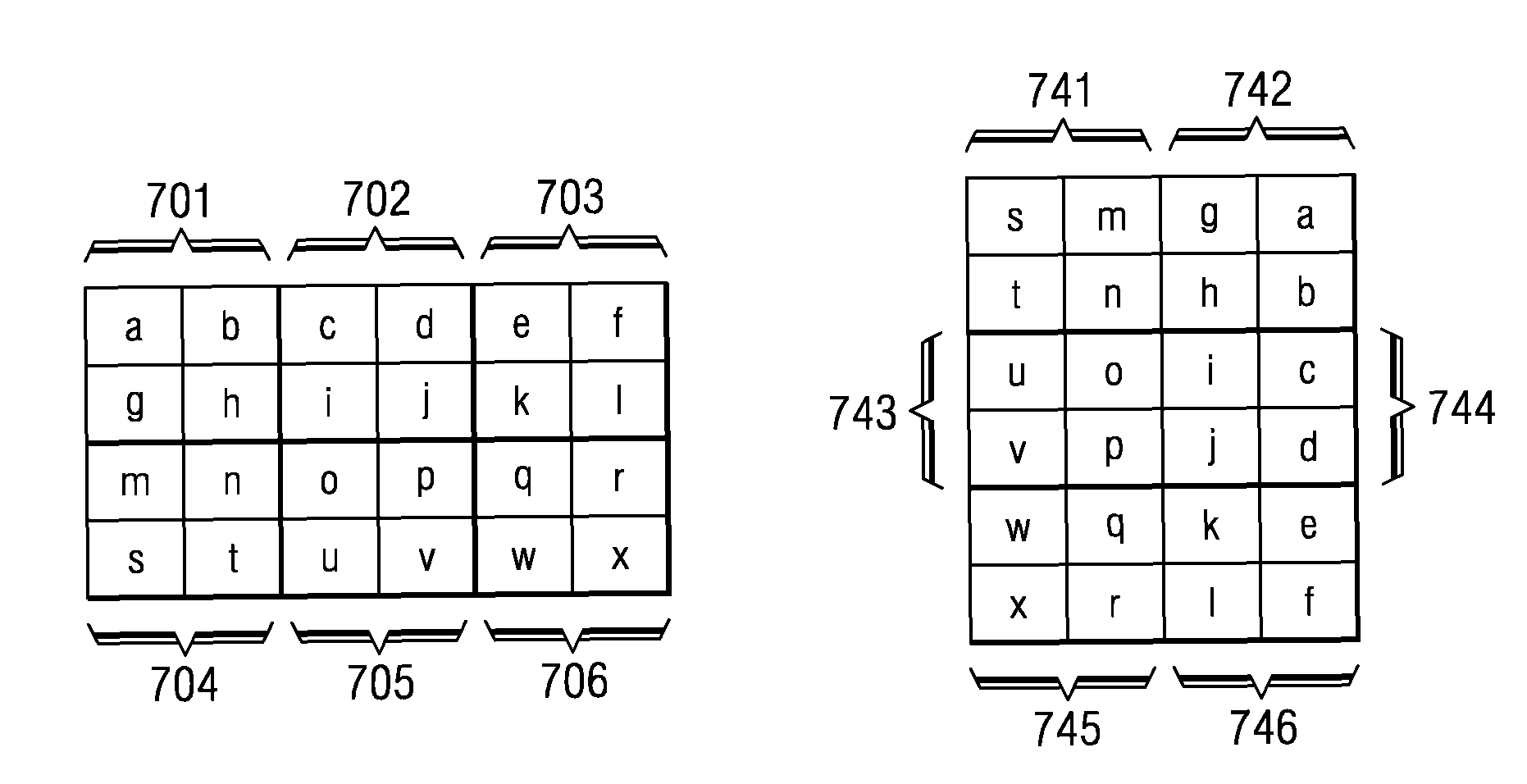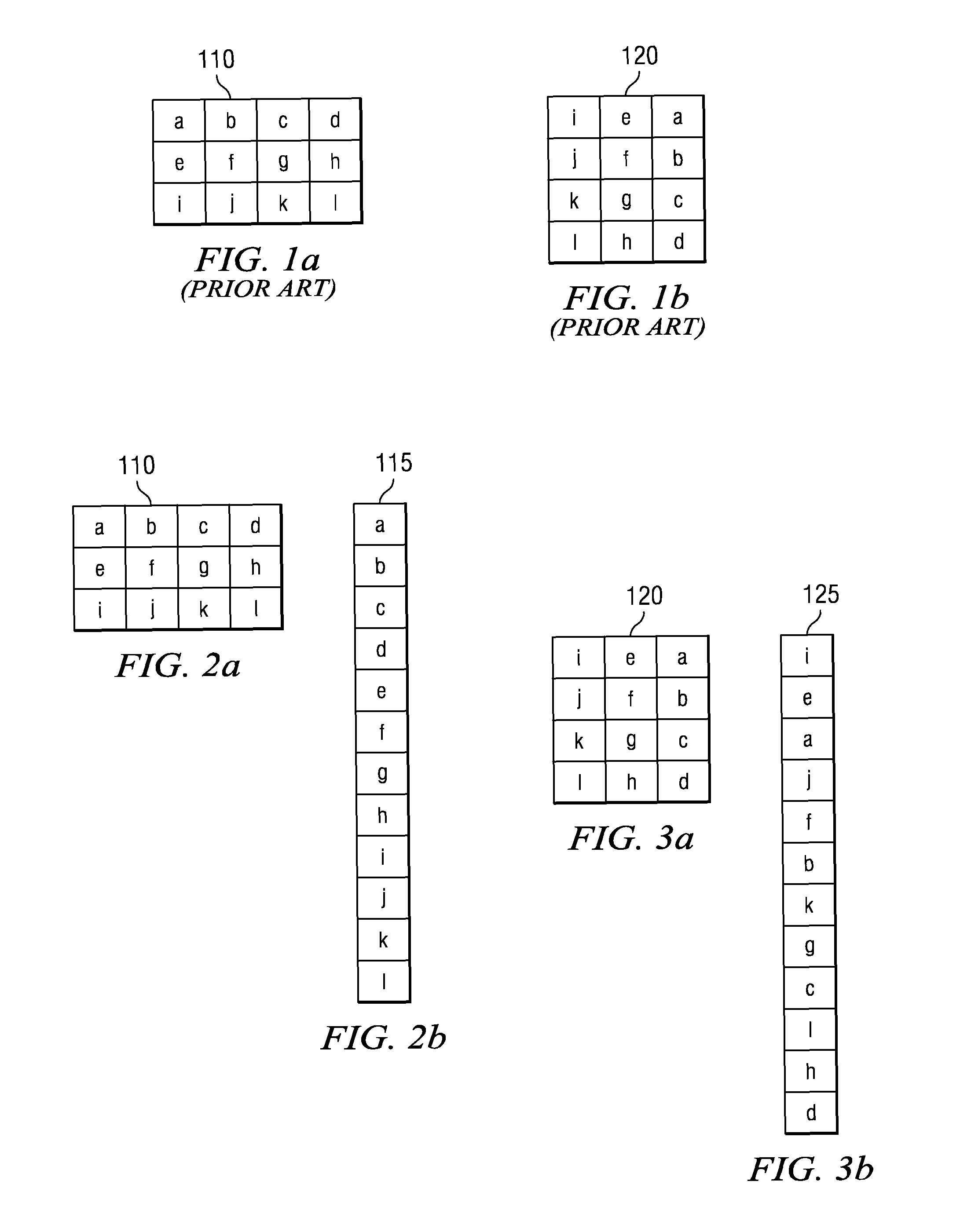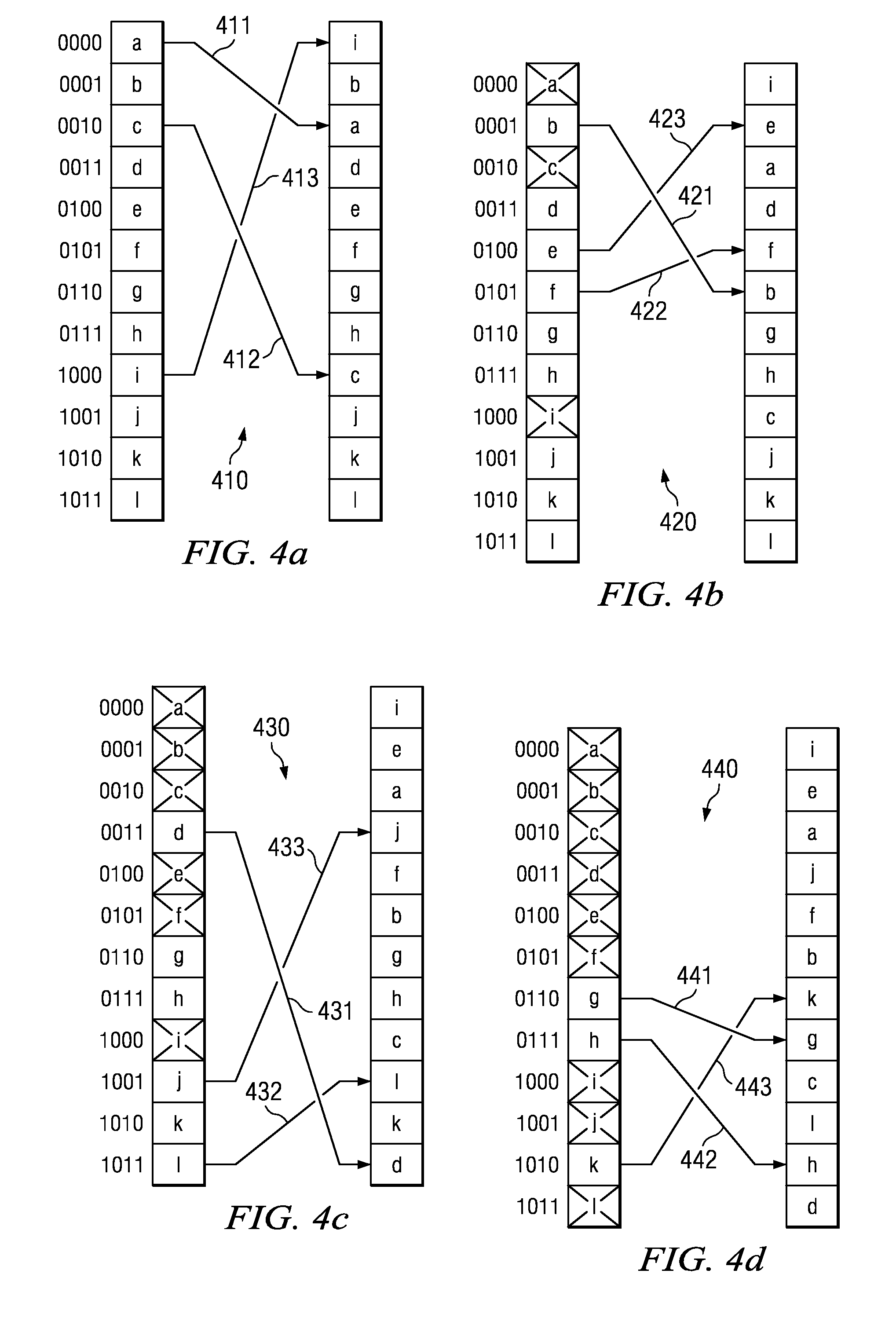In place rotation of images for low memory systems
a low-memory system and image rotation technology, applied in the field of computer image manipulation, can solve the problems of poor use of memory bandwidth, inability to access external memory, and the cost of external memory accessing is most likely to be based on the latency of the access and not the actual data movement itsel
- Summary
- Abstract
- Description
- Claims
- Application Information
AI Technical Summary
Problems solved by technology
Method used
Image
Examples
Embodiment Construction
[0019]FIG. 1 illustrates an example rotation operation to which this invention applies. FIG. 1a illustrates original image 110. Original image 110 is a three row by four column image including pixels a to l. FIG. 1b illustrates rotated image 120. Rotated image 120 is a four row by three column image of the same pixels a to l.
[0020]Image rotation according to the prior art requires two image buffers as large as the original image. The first image buffer stores the original image. The second image buffer stores the rotated image. According to the prior art, image rotation takes place by copying each pixel from its position in the original image into the corresponding position of that pixel in the rotated image. This prior art process requires computation of the position within the rotated image that stores each pixel of the original image. This process is not difficult. The principle disadvantage of this prior art process is the requirement for two image buffers. In systems with littl...
PUM
 Login to View More
Login to View More Abstract
Description
Claims
Application Information
 Login to View More
Login to View More - R&D
- Intellectual Property
- Life Sciences
- Materials
- Tech Scout
- Unparalleled Data Quality
- Higher Quality Content
- 60% Fewer Hallucinations
Browse by: Latest US Patents, China's latest patents, Technical Efficacy Thesaurus, Application Domain, Technology Topic, Popular Technical Reports.
© 2025 PatSnap. All rights reserved.Legal|Privacy policy|Modern Slavery Act Transparency Statement|Sitemap|About US| Contact US: help@patsnap.com



